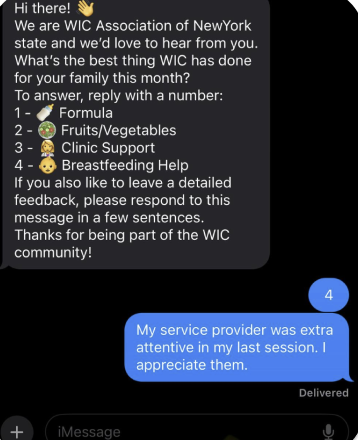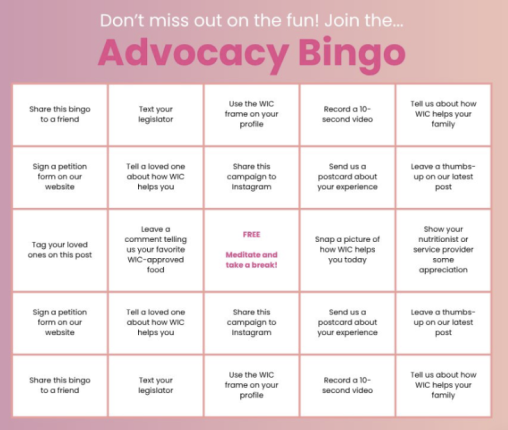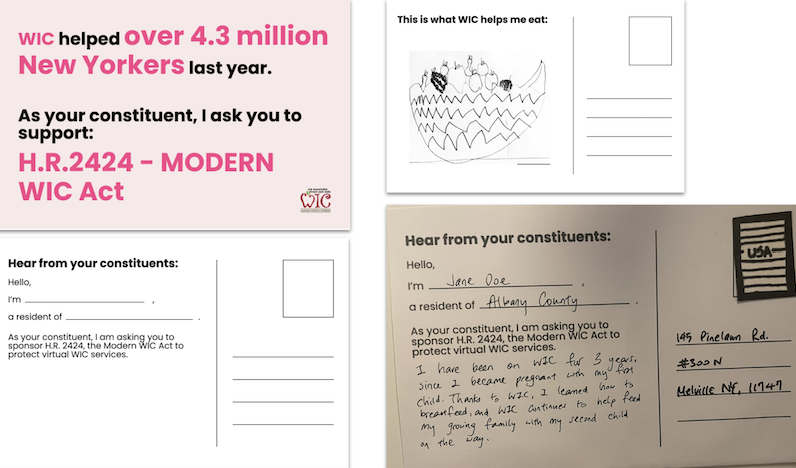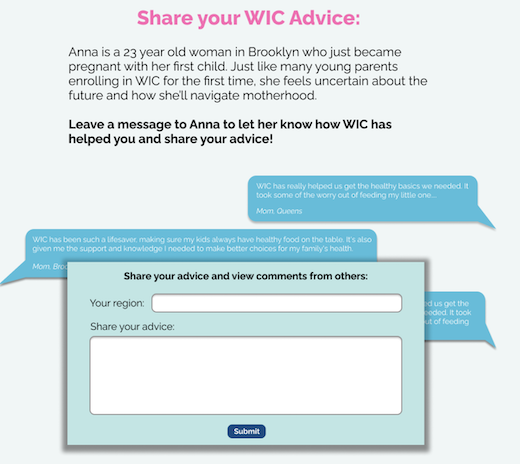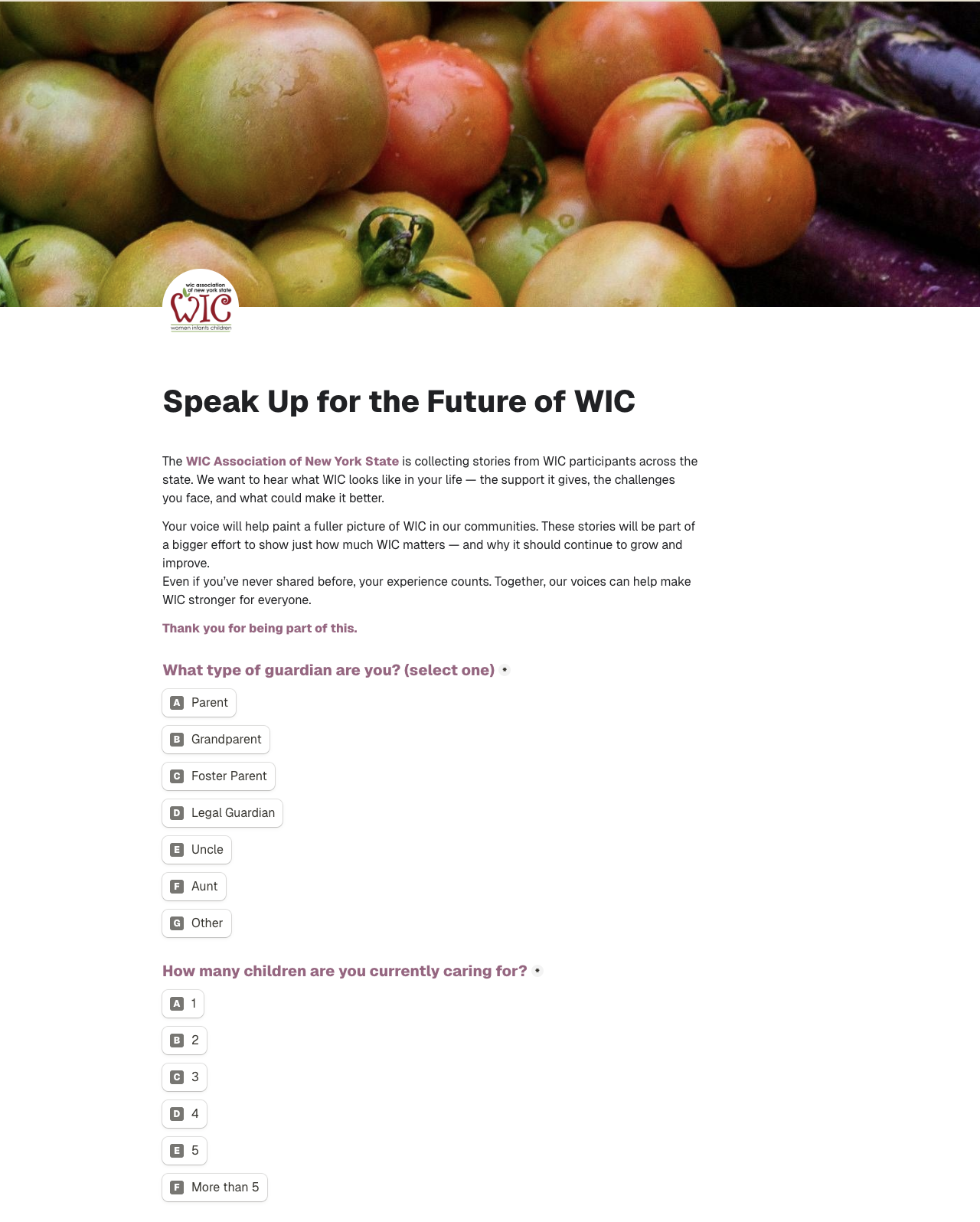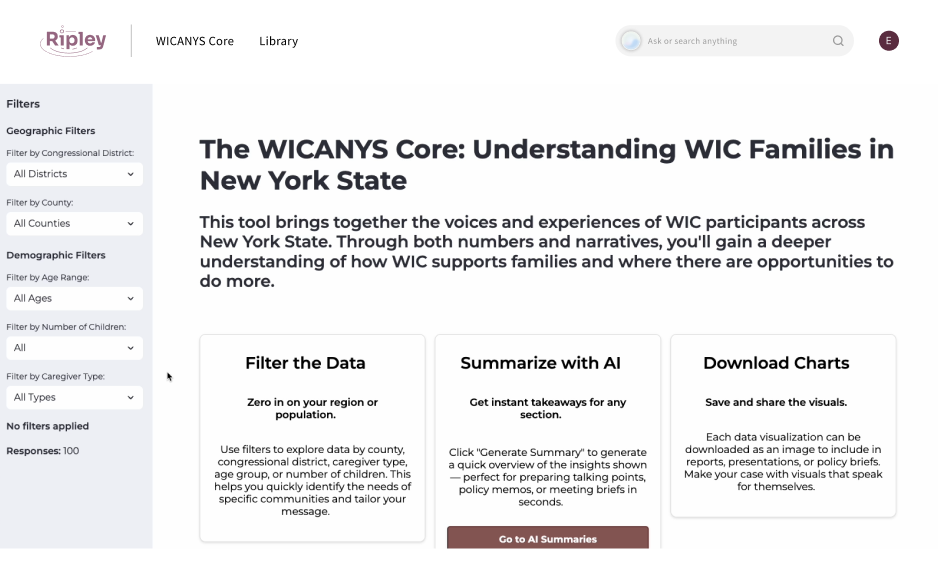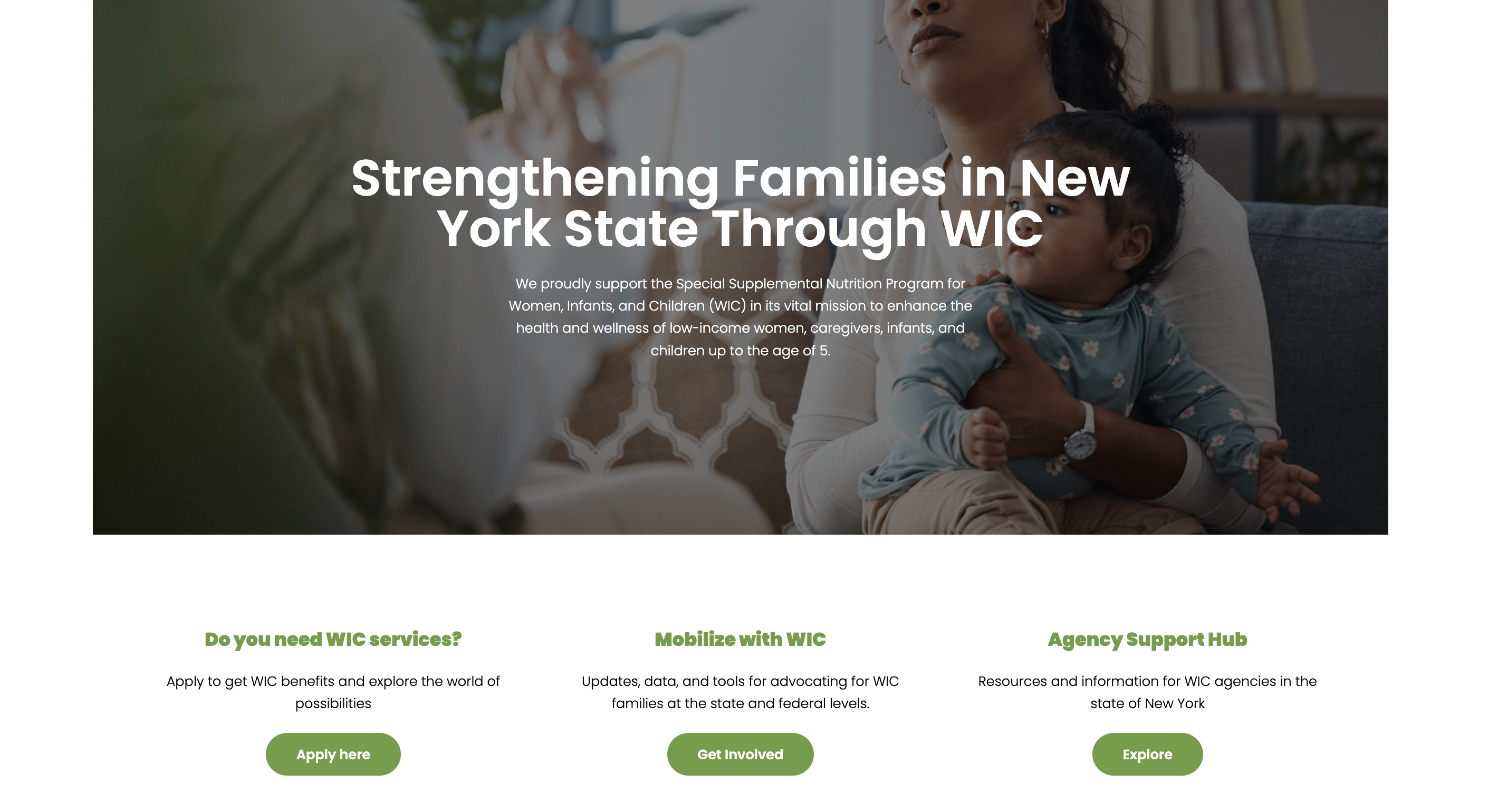Three-Phase Approach
We followed a structured three-phase process to develop our advocacy solutions, moving from exploration to implementation.
Explored 12 different concepts to identify the most promising direction. Converged on data collection through surveys and advocacy dashboards.
Built two workstreams: website redesign and revolutionary survey system. Progressed from wireframes to high-fidelity prototypes.
Created functional prototypes and developed Ripley the Casemaker based on legislator feedback.
Key Prototypes
| Phase | Prototype | Focus Area |
|---|---|---|
| Week 1 | Love Letters for WIC | Structure & task framing for participant advocacy |
| Week 2 | Advocacy Bingo | |
| Week 2 | WIC Texts | Reducing time, cognitive, and mental overload |
| Week 2 | Advocacy Canvas | |
| Week 2 | Advice Wall | Explore positive reinforcement and reward for participation |
| Week 3 | Journaling mechanism (with WIC) | |
| Week 4-5 | Dashboard + Survey System | Data visualization & story collection |
| Week 4-5 | Website Redesign | User experience & clear navigation pathways |
| Final | Ripley the Casemaker | AI-powered advocacy assistance |
Research Insights
Key Finding: Participants need to feel secure and participate with ease when sharing personal stories for advocacy.
Key Finding: Legislative advocates need an efficient data management system that bolsters and preserves their autonomy, having full control over how the systems are implemented.
Key Finding: Advocacy must be aligned with legislators' priorities and the needs of their constituents, politically, personally, and ideologically.
Solution Development
Focused on transparency, security, and clear data usage to build trust and encourage regular participation from WIC staff and participants.
Emphasized efficiency and autonomy, ensuring advocates maintain full control over data interpretation and storytelling.
Created clear pathways for different stakeholder segments with specific call-to-actions throughout the user journey.
